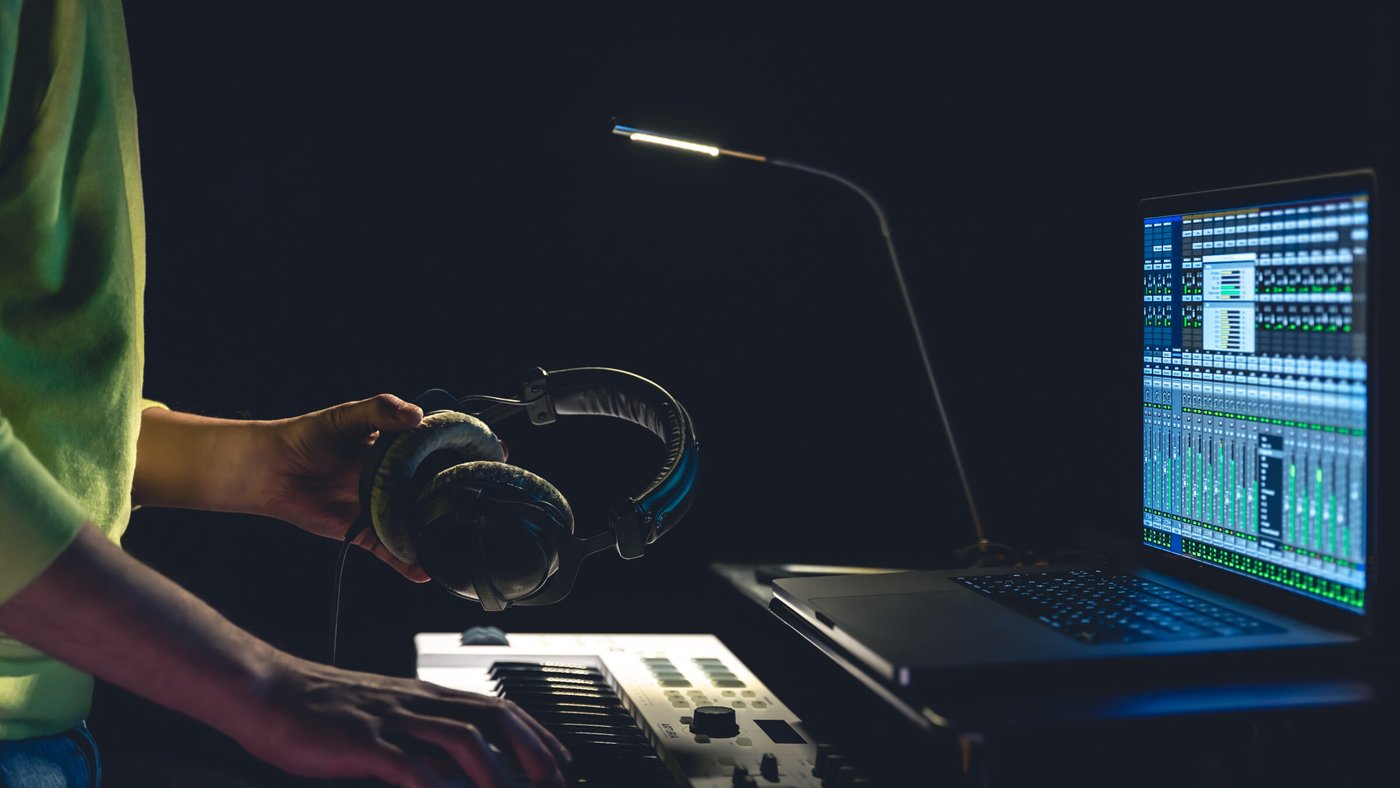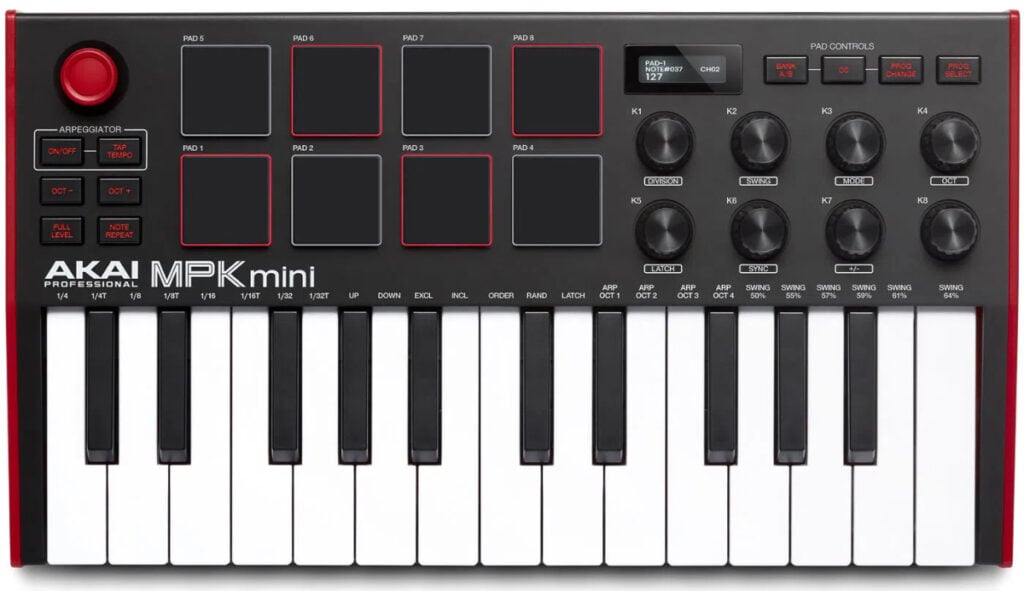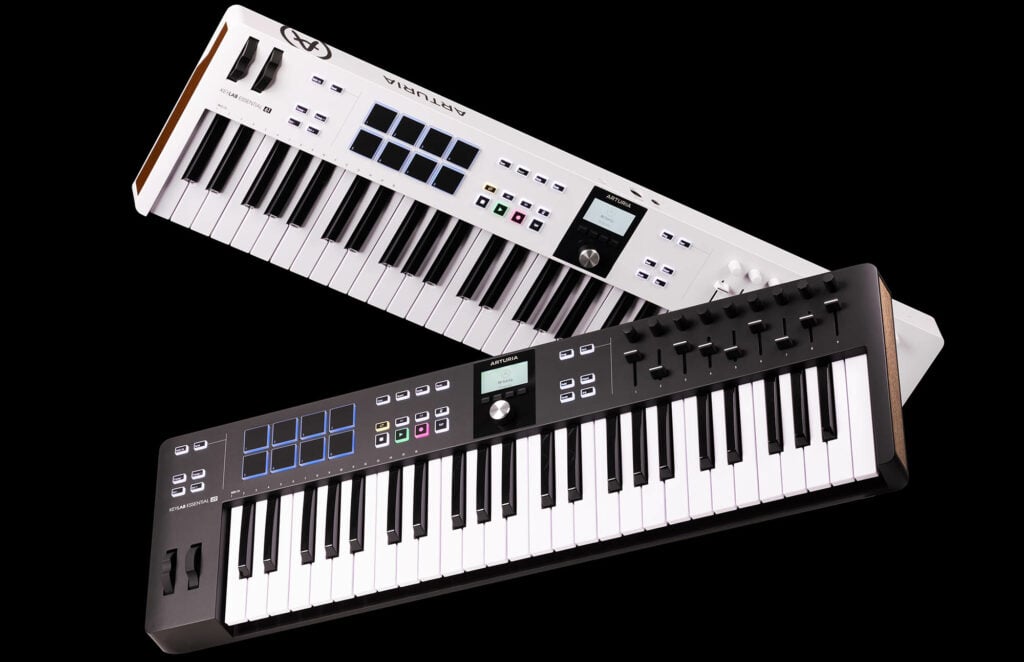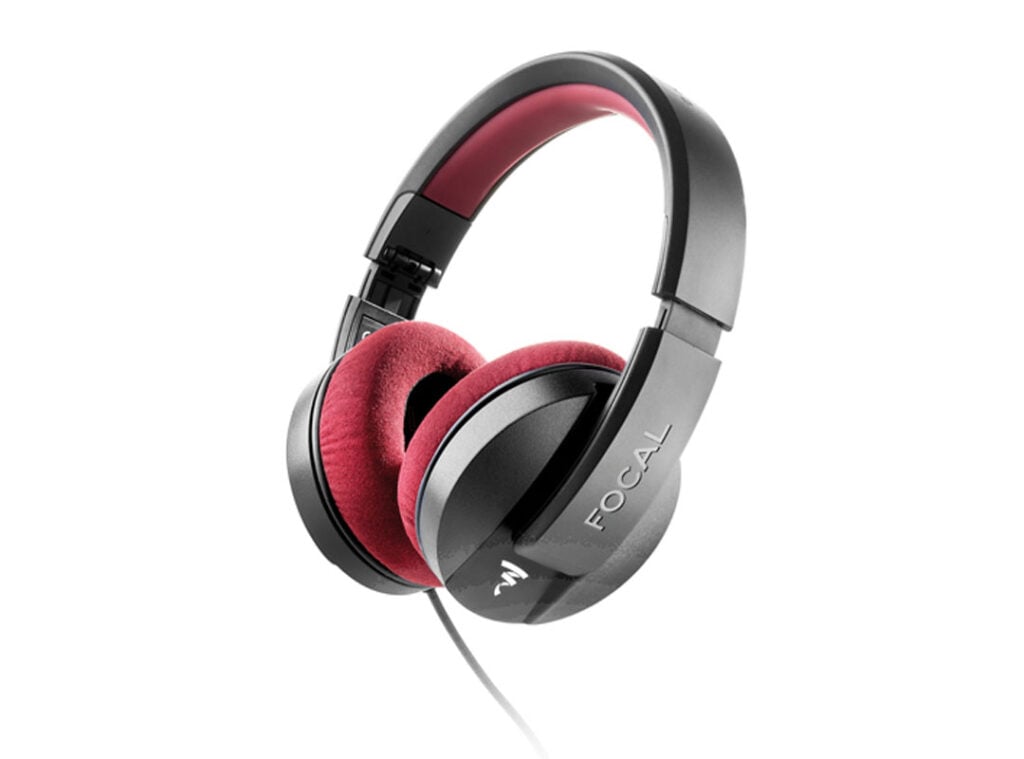
What makes your favorite songs, well, your favorite? It usually more than just a good vocal part or a catchy chorus; they probably have infectious beats that make you dance (or at least tap your feet).
Did you know you can follow in the footsteps of your favorite producers and artists by learning how to make your own beats? While learning how to produce music may seem overwhelming, it’s easier than it sounds – and it means you’ll be able to create your new favorite songs all by yourself.
Beat-making is a personal experience. If you’re venturing into electronic music, you’ll learn to create unique, captivating soundscapes that transport your audience into a different world.
Who should make beats?
Polishing your beat-making skills could take you down the path to a lucrative career – or just become a fun and rewarding hobby. With consistent practice, you can progress from making simple beats to full compositions.
Rhythm – the arrangement of sound and silence over time – forms the foundation of a musical piece. It provides a sense of structure, groove, and pulse.
A rhythmic pattern develops within repetitive series of notes and rests. Musical rhythm dictates when the notes are played, their duration, and the intensity of their play.
“Rhythm is sound in motion. It is related to the pulse, the heartbeat, the way we breathe. It rises and falls. It takes us into ourselves; it takes us out of ourselves.”
Edward Hirsch, poet
Rhythm is notated using musical notation – symbols and markings that represent the duration and timing of notes and rests. You can use software (like Finale) or traditional manuscript paper to notate beats, which involves notes, rests, and even accents.
Pencils on a tabletop aren’t going to cut it. Let’s talk about the tools you need to make beats.
Beat-making software
A Digital Audio Workstation (DAW) is a software application that lets you to create, mix, and master audio recordings. Your DAW provides a digital environment where you record, edit, produce, or arrange digital audio files.
DAWs cater to different beat-making needs, ranging from pro recording studios to home setups. Naturally, free or low-cost options have limited features, while the feature-packed, professional suites carry hefty price tags.
Popular DAWs include:
Ableton Live
With its fast and creative workflow, Ableton Live is a favorite among pros, especially in a live performance setting. It features an intuitive user interface and offers various instruments, MIDI effects, and audio content.
Logic Pro
Logic Pro is the go-to DAW for Mac users. More affordable than some of the other DAWs but still a popular choice for pros, it’s jampacked with virtual instruments and plugins, offering an impressive toolkit to bring your beats to life.
Click here for a full Logic Pro X video tutorial.
Pro Tools
Pro Tools is a powerhouse of a program used by a ton of pro studios. It features a dynamic offering of audio recording, editing, and mixing features. It’s popular with producers and musicians looking to create professional-grade beats – and has the price tag to match.
Linux Multimedia Studio
The Linux Multimedia Studio is a free, open-source software the creators have been continually refining since its release in 2004. It blends trackers and sequencer capabilities to deliver top beat-making capabilities.
Beat-making hardware
Before diving into making beats, here’s some of the hardware you may need in your toolkit:
A computer
In today’s digital age, with analog equipment becoming obsolete, computers have become the heart of music production. While you can make beats on virtually any computer – be it a MacBook, PC or desktop – specs do matter when it comes to processing power (you don’t want to crash your DAW and lose all your work).
Make sure you meet the minimum requirements of your beat-making software and go from there. Popular choices include the MacBook Pro, Dell XPS, MacBook Air, and Microsoft Surface Studio 2.
Beat sequencer
A beat sequencer provides a structured environment to create rhythmic patterns and note sequences. It lets you precisely arrange beats, percussion elements, and other rhythmic components.
While sequencers vary from basic to studio-grade, having one can simplify the beat-making process, especially for beginners.
Popular beat sequencers include:
Digitakt
Digitakt is a compact and versatile digital drum machine, a synthesizer, a powerful 8-track sampler, and a step sequencer. You can program up to eight tracks with varying sequences, control MIDI parameters, and overlay effects on each sequence.
MPC One
Although MPC One is a scaled-down version of the MPC X, it has a powerful sequencer and groove box. With DAW-like capabilities, you can splice, chop, and program sequences effortlessly. It’s perfect for beginners who need a smaller but equally powerful version of the popular MPC X.
A MIDI controller
A Musical Instrument Digital Interface (MIDI) controller is a hardware device that translates musical actions into MIDI data. It comprises a series of dials, buttons, sliders, and often a small keyboard to support a hands-on beat-making process.
This controller lets you experiment with sounds and test melodies using MIDI-supported devices. You can use it to simulate sounds and manipulate various sound parameters in electronic music.
Popular MIDI controllers include:
Akai MPK Mini Mk3

With its 25-key controller, the Akai MPK Mini Mk3 is a feature-packed MIDI controller ideal for beginner producers and professional beat-makers. It features an OLED display, eight MPC-style pads, and eight assignable, “endless” knobs.
The innovative note-repeater function and a built-in arpeggiator make it a must-have for EDM producers and beat-makers.
Arturia KeyLab Essential 49

Affordable yet rich in features, the Arturia KeyLab Essential 49 offers a sleek design with 49 velocity-sensitive keys for a full hands-on workflow. This may lower your learning curve when learning how to produce music!
Compatible with the best DAWs, its nine assignable faders and rotary knobs add more options and expressiveness to your beats.
Studio headphones
Many producers prefer headphones for making creative decisions because they highlight the fine details of your beat. Studio headphones are producer favorites because you can get a true sonic picture. Popular studio headphones include:
Focal Listen Professional

The Focal Listen Professional are closed-backed, over-ear studio headphones with awesome sound output. They’re perfectly balanced with neutral, punchy bass, smooth highs, and clear mids. They provide a snug but comfortable fit to handle long sessions.
Røde NTH-100
The over-ear NTH-100 is the flagship product of Røde, an Australian brand known for high quality microphones. These studio headphones are designed to mimic the human ear’s shape for a natural fit. They combine quality construction with innovative drivers to deliver outstanding sound and clarity.
Here’s the simplest way to build beats:
You can build the beat in a linear or ‘stacked’ way. Most people do it by ‘stacking’ notes – for example, they might start with a beat that sounds like two bass drum notes followed by a snare note, then adding a repetitive hi-hat sound over top.
But for some people, it makes sense to add layers later and start with just the hi-hat, maybe adding in bass drum notes once the song is complete.
There’s no right or wrong way to do it. Your brain might work differently than others. Do what makes sense to you!
A sample is a short piece of audio that you can choose, copy-paste, and manipulate to reflect your vision. Samples serve as a creative cornerstone for beat makers and beginner producers. A diverse sample library powers your ability to transform audio fragments and infuse compositions into beats and soundscapes.
Choosing existing drum samples accelerates the beat-making process, providing you with already-available sounds. You can even bridge musical eras – like how Kanye West’s song “Gold Digger” uses a clip from a 1954 track.
There are no rules, really. Your process might be a personal and creative one, but here’s a general guideline on how to produce a full song.
1. Set your BPM and time signature
What mood do you want to convey? The BPM (Beats Per Minute, also known as tempo) sets the pace of your beat, influencing its energy and movement. Meanwhile, the time signature defines its rhythmic pattern and structure.
Higher BPMs – aka faster-sounding music – evoke a sense of energy and excitement, while lower tempos create a chilled or contemplative vibe. 4/4 is the most common time signature in beat-making and consists of four beats per measure, with the quarter note receiving one beat.
3. Start with the drums
Once you get a catchy bass line, it’s time to add your drum part, including hi-hats, snare, and kick. Most beats use higher-pitched drum sounds to provide rhythm and outline the groove. If you plan to include a vocal part, keep your drums simple so they don’t overshadow the topline melody and lyrics.
Typically, the rhythm from high-pitched percussion instruments sets the beat’s groove. It’ll dictate the rhythmic subdivisions that a rapper or a singer may use as a reference. Actively listening to the bass while adjusting drum placements on your sequencer allows you to come up with unique rhythms.
2. Come up with a bass line
You can also start with the bass instead of the beat – it’s totally up to you. The bass will set the chord progression. A good bass line balances complexity and simplicity.
If it’s too plain, it might be overshadowed in the mix, but get too complex and it can overwhelm other elements. Experiment with various bass sounds until you find one that complements your beats. Ideally, you should find a simple melody that suits your taste and build on it.
If you’re not feeling melodically creative, you can grab some pre-made bass lines from a royalty-free sound library like Splice (they even have a free 14-day trial).
4. Layer the melodic elements
Melodies and harmonies add depth and complexity to your composition. Your DAW and synthesizer’s virtual instruments and sample libraries offer a ton of sonic possibilities. Synths come with an electronic vibe, while acoustic instruments give your beats an organic touch.
Your choice of melodic layer depends on your creativity, imagination, and composition but should sound good with your bass line.
5. Expand into different sections
Once you’ve created the first part, you’ll need to expand it to create a complete song. Use your DAW to loop the beat, then trim or add elements from various parts to eliminate monotony.
You can go for a traditional ABAB (or verse-chorus-verse-chorus) structure, or try something more progressive. Don’t forget your intro and outro, and most good songs have a hooky bridge or change in the middle.
You should vary the beats somewhat between sections to keep the listener interested. This could be as simple as adding or taking away layers, changing from regular time to half time, or something else.
6. Add transitions
Once you’ve figured out your bass, drums, and melody, you can fill the transitions between song sections – and gaps between layers – with additional sounds. While these aren’t necessary, they can spice up the track.
Even a simple beat can become more interesting with unexpected layers, builds and drops. Want the drone of a buzzsaw or the punch of jingling keys? Go for it. Just make sure it adds to the song rather than distract.
7. Mix and master
If you want your track to sound more pro, you’ll need to learn how to mix and master. Making beats is one thing, but knowing how to put the finishing touches on your track is another story. You can go down a deep rabbit hole learning about EQ, compression, limiters, and adjusting volume levels.
Check out this tutorial for mixing/mastering a rap track:
Learn drums and write better beats
Learning drums can majorly elevate your beat-making abilities. Playing drums will help you to craft intricate beats more quickly, understand how rhythms support melodies and more.
What’s a bass drum and when should it come in? What does a hi-hat cymbal sound like? Learning drums will also help you develop a better grasp of musical structure and compose better tracks overall.
Try learning drums with the biggest online drumming platform: sign up for a free 7-day Drumeo trial.
Drumeo Team - We're professional, award-winning drummers and drum teachers, coaches, recording artists, and content specialists who are passionate about drums and helping drummers around the world. This post was written and/or edited by Sam Landa, Brandon Toews, Jared Falk, Dave Atkinson, or another pro on our team (which has a combined 1000+ years of drumming experience). Are you looking for inspiration, education, and support to take your playing to the next level? Join the Drumeo community today!


By signing up you’ll also receive our ongoing free lessons and special offers. Don’t worry, we value your privacy and you can unsubscribe at any time.
We use cookies for traffic data and advertising. Cookie Policy »